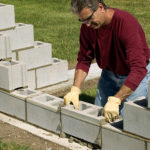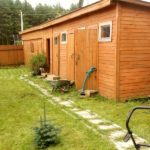The information in this article about how to build a brick wall will be useful for those who is planning the construction of brick buildings in the professional and amateur level.
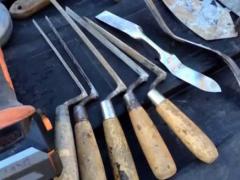 Walling is one of the most important and crucial stage of home building. It defines the appearance of construction and its operating characteristics. You should meet all requirements of thermal and acoustic insulation, fire resistance, sound insulation, and most importantly – make it durable and strong. In modern construction builders use for house sides different materials: wood, brick, block with different filling. Basic characteristics of these home parts depend on selected material or combination of materials. So, lets read how to build a brick wall.
Walling is one of the most important and crucial stage of home building. It defines the appearance of construction and its operating characteristics. You should meet all requirements of thermal and acoustic insulation, fire resistance, sound insulation, and most importantly – make it durable and strong. In modern construction builders use for house sides different materials: wood, brick, block with different filling. Basic characteristics of these home parts depend on selected material or combination of materials. So, lets read how to build a brick wall.
Traditionally, it is believed that walls built of brick have optimal characteristics. They own great strength, fire-resistance, are able to withstand high dynamic and static loads. But they still have a number of shortcomings, which include primarily thermal conductivity. Therefore, you have to perform the appropriate insulation type. Also, this material absorbs moisture, which makes it necessary to protect home sides from the external factors, for example, by plastering.
Let’s see what devices for smooth brickwork we may need.
Hand tools:
- Trowel. Using a trowel you level cement solution, fill voids between main details. Note the convenience and angle of a handle.
- Plumb. Apply it for the evenness of vertical surfaces.
- Level. It is practical to use a metal one. It controls the evenness of horizontal and vertical rows. Without a level it is simply impossible to make a right beautiful masonry.
- Kirk – a bushhammer. You need to carve big stones into smaller pieces.
- To make your work as comfortable as possible, do not forget tools, such as roulette, scraping instrument, triangles.
Automatic devices
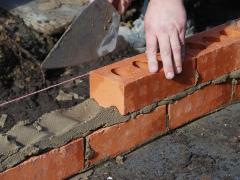 Automatic devices for quick laying process can be made less costly, both physically and financially. You can make it using automated tools. Progress does not stand still, and modern industry offers a range of high-tech tools:
Automatic devices for quick laying process can be made less costly, both physically and financially. You can make it using automated tools. Progress does not stand still, and modern industry offers a range of high-tech tools:
- Automatic hammer consisting of two levels – lasers and automatic hammer with a built-in receiver. Thanks to an automatic hammer, you can reach virtually flawless details placement in vertical and horizontal areas, as well as in four corners. Using automatic tools on a construction you will boost productivity in 4-5 times. A hammer is powered by a rechargeable battery. Payback will be in two or three months.
- Device for laying. This device consists of a metal structure with electronic inclinometer, which allows you to precisely place cement, and thus reach the level masonry. Technical effect increases labor productivity and qualitative results at the end of work.
Please note that selecting an automatic device, you need to achieve the matching of the gap width on unit with a stone width. Otherwise, the use feasibility will be highly questionable.
Basic principles of wall masonry step by step
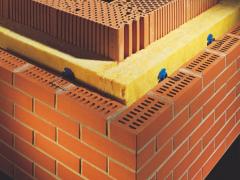 Masonry of sides has a distinctive pattern that is the result of base works of masons – stone bond. The whole point of masonry method is that a builder pushes each row and, as a rule, he moves exactly half a stone.
Masonry of sides has a distinctive pattern that is the result of base works of masons – stone bond. The whole point of masonry method is that a builder pushes each row and, as a rule, he moves exactly half a stone.
Without such a technique the brickwork would be transformed into columns. Of course, columns that are not connected will not be a true monolithic wall and structural strength will greatly suffer. That is why it is necessary to understand for yourself what is the stone bond and how to make it perfectly.
The simplest bond for single-layer brickwork
Basic stone bond – a shifting of each row by half a stone. After the first row is laid, you should start with half a brick. This ensures a stone bond. The essence is that bricks overlap joints between separate elements. This also applies to curved walls in the building.
By this simple method, brickwork turns truly monolithic and durable. To make a clearer vision about one-layer masonry, you may look at the pattern on facades of almost any modern home or cottage. The fact is that in modern conditions, such buildings are built of blocks and then laid with single-layer masonry.
Double brickwork stone bond
In the simplest case you just need to move each row. But if a brick wall is laid with double thickness, it is not enough. Now you need to bond two layers to each other for getting really a double wall thickness. Clearly, if these layers are not tied together, in a result you will turn out just two sides, and once again the strength of a structure would not be good.
The following method is provided by alternating rows of two types. In one of them stones are laid in traditional way, i.e. along walls. In another – bricks are laid transversely in a row. Thus, every second group connects two building sides in a monolithic structure. Your construction turns solid and reliable, just as it should be.
Triple brickwork stone bond
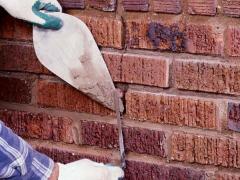 Approximately, in the same way you should make this process, when you need to lay a triple brick side. Only in this case we have three types of alternate groups.
Approximately, in the same way you should make this process, when you need to lay a triple brick side. Only in this case we have three types of alternate groups.
There should be a traditional row, when bricks are oriented along constructing walls. Another row connects the first one, outer and middle layers. This is achieved due to the laying of bricks transversely to a side. The third one is laid out in such a way as the second group, but they connect average and inner layers between each other. In fact, this is the same technique, but with a slight variation.
Conclusions
As described in this article the laying principle is clear, when the brickwork does not seem to be something very difficult. The point is to alternate layers and move rows in such a way that constructed structures could overlap all joints, and move rows in half a brick.

